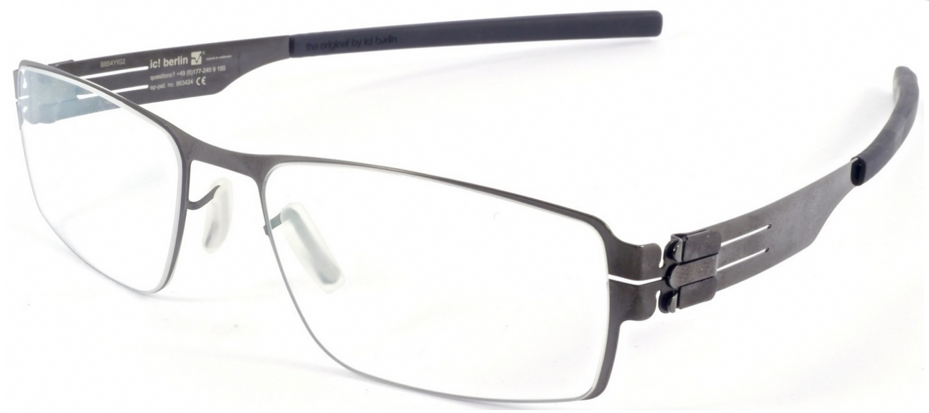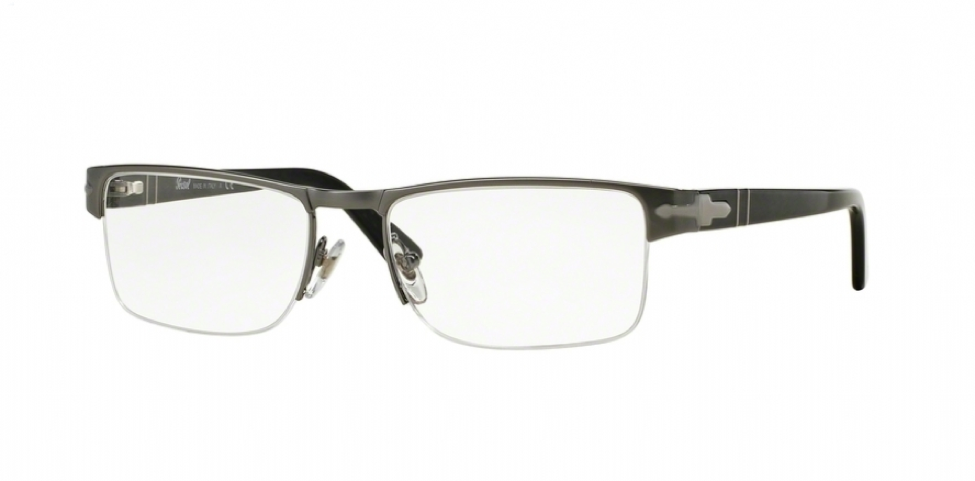Metal Grooved v Grooved Rimless E-Type & Frame Type
Electronic ordering at Cherry Optical, Inc continues to grow in popularity. With more practice management software programs integrating with electronic ordering programs, we expect this trend to continue until nearly 100% of orders are sent and received electronically.
One area we see a lot of customers get tripped-up on is E-type (edge type when utilizing RxWizard) and Frame Type (when utilizing VisionWeb) in regards to what is a Metal Groove versus a Grooved Rimless.
A “grooved rimless” is your standard rimless frame; metal or plastic on the top and fishing line along the bottom to hold the lens in place. They are the extreme majority of rimless frame styles on the market.
A “metal groove” is a bit more unique frame style. For this type of frame, the entire lens is grooved. By doing so, it allows the frame to fit in and secure the lens. Examples of metal groove include many Mykita and IC Berlin frame styles.
Compared side-by-side, the difference between a grooved rimless and a metal groove are rather evident:
[caption id="attachment_3052" align="alignnone" width="929"] Notice on this IC Berlin metal groove that the metal frame sets into the groove of the lens all the way around the frame. Most metal groove frames require a minimum edge thickness of 2.4 to 2.6 mm.[/caption]
[caption id="attachment_3053" align="alignnone" width="975"]
Notice on this IC Berlin metal groove that the metal frame sets into the groove of the lens all the way around the frame. Most metal groove frames require a minimum edge thickness of 2.4 to 2.6 mm.[/caption]
[caption id="attachment_3053" align="alignnone" width="975"] On this grooved rimless Persol frame, the bottom ½ of the lens is held in place by a clear fishing line. Most grooved rimless frames can be produced to a minimum edge of 2.0 to 2.2 mm.[/caption]
So, now that we know the difference; what’s the big deal? The big deal is that a metal groove lens needs to be manufactured thicker to accommodate the wider and deeper groove needed to accommodate the width of the frame. If, on a metal groove frame, the lens is made too thin, the chances of the lens chipping increase dramatically. This chipping effect will be exacerbated if Trivex, Tribrid or 1.67 lens materials are not used. In many cases if an order is placed as grooved rimless and it turns out the frame is a metal groove frame; we’ll need to restart the job to produce thicker lenses for + powered and low – powered lenses.
If an order is entered as metal groove and it actually is grooved rimless; the lenses will be noticeably thicker than they need to be for + powered and low – powered lenses. In these cases, we almost always restart the job to ensure lenses that are cosmetically correct. Like metal groove frames styles, Cherry Optical, Inc highly recommends the use of Trivex, Tribrid, and 1.67 materials for grooved rimless frame styles as well. Doing so will dramatically reduce the possibility of chipped lenses. Avoid plastic lenses at all costs and contrary to popular belief, polycarbonate is not as crack-resistant (tensile strength) as Trivex, Tribrid, and 1.67 material.
Taking an extra moment or two at order entry to ensure what rimless E-type and frame type you are entering will warrant the fastest turn times possible on your electronic orders.
On this grooved rimless Persol frame, the bottom ½ of the lens is held in place by a clear fishing line. Most grooved rimless frames can be produced to a minimum edge of 2.0 to 2.2 mm.[/caption]
So, now that we know the difference; what’s the big deal? The big deal is that a metal groove lens needs to be manufactured thicker to accommodate the wider and deeper groove needed to accommodate the width of the frame. If, on a metal groove frame, the lens is made too thin, the chances of the lens chipping increase dramatically. This chipping effect will be exacerbated if Trivex, Tribrid or 1.67 lens materials are not used. In many cases if an order is placed as grooved rimless and it turns out the frame is a metal groove frame; we’ll need to restart the job to produce thicker lenses for + powered and low – powered lenses.
If an order is entered as metal groove and it actually is grooved rimless; the lenses will be noticeably thicker than they need to be for + powered and low – powered lenses. In these cases, we almost always restart the job to ensure lenses that are cosmetically correct. Like metal groove frames styles, Cherry Optical, Inc highly recommends the use of Trivex, Tribrid, and 1.67 materials for grooved rimless frame styles as well. Doing so will dramatically reduce the possibility of chipped lenses. Avoid plastic lenses at all costs and contrary to popular belief, polycarbonate is not as crack-resistant (tensile strength) as Trivex, Tribrid, and 1.67 material.
Taking an extra moment or two at order entry to ensure what rimless E-type and frame type you are entering will warrant the fastest turn times possible on your electronic orders.
 Notice on this IC Berlin metal groove that the metal frame sets into the groove of the lens all the way around the frame. Most metal groove frames require a minimum edge thickness of 2.4 to 2.6 mm.[/caption]
[caption id="attachment_3053" align="alignnone" width="975"]
Notice on this IC Berlin metal groove that the metal frame sets into the groove of the lens all the way around the frame. Most metal groove frames require a minimum edge thickness of 2.4 to 2.6 mm.[/caption]
[caption id="attachment_3053" align="alignnone" width="975"] On this grooved rimless Persol frame, the bottom ½ of the lens is held in place by a clear fishing line. Most grooved rimless frames can be produced to a minimum edge of 2.0 to 2.2 mm.[/caption]
So, now that we know the difference; what’s the big deal? The big deal is that a metal groove lens needs to be manufactured thicker to accommodate the wider and deeper groove needed to accommodate the width of the frame. If, on a metal groove frame, the lens is made too thin, the chances of the lens chipping increase dramatically. This chipping effect will be exacerbated if Trivex, Tribrid or 1.67 lens materials are not used. In many cases if an order is placed as grooved rimless and it turns out the frame is a metal groove frame; we’ll need to restart the job to produce thicker lenses for + powered and low – powered lenses.
If an order is entered as metal groove and it actually is grooved rimless; the lenses will be noticeably thicker than they need to be for + powered and low – powered lenses. In these cases, we almost always restart the job to ensure lenses that are cosmetically correct. Like metal groove frames styles, Cherry Optical, Inc highly recommends the use of Trivex, Tribrid, and 1.67 materials for grooved rimless frame styles as well. Doing so will dramatically reduce the possibility of chipped lenses. Avoid plastic lenses at all costs and contrary to popular belief, polycarbonate is not as crack-resistant (tensile strength) as Trivex, Tribrid, and 1.67 material.
Taking an extra moment or two at order entry to ensure what rimless E-type and frame type you are entering will warrant the fastest turn times possible on your electronic orders.
On this grooved rimless Persol frame, the bottom ½ of the lens is held in place by a clear fishing line. Most grooved rimless frames can be produced to a minimum edge of 2.0 to 2.2 mm.[/caption]
So, now that we know the difference; what’s the big deal? The big deal is that a metal groove lens needs to be manufactured thicker to accommodate the wider and deeper groove needed to accommodate the width of the frame. If, on a metal groove frame, the lens is made too thin, the chances of the lens chipping increase dramatically. This chipping effect will be exacerbated if Trivex, Tribrid or 1.67 lens materials are not used. In many cases if an order is placed as grooved rimless and it turns out the frame is a metal groove frame; we’ll need to restart the job to produce thicker lenses for + powered and low – powered lenses.
If an order is entered as metal groove and it actually is grooved rimless; the lenses will be noticeably thicker than they need to be for + powered and low – powered lenses. In these cases, we almost always restart the job to ensure lenses that are cosmetically correct. Like metal groove frames styles, Cherry Optical, Inc highly recommends the use of Trivex, Tribrid, and 1.67 materials for grooved rimless frame styles as well. Doing so will dramatically reduce the possibility of chipped lenses. Avoid plastic lenses at all costs and contrary to popular belief, polycarbonate is not as crack-resistant (tensile strength) as Trivex, Tribrid, and 1.67 material.
Taking an extra moment or two at order entry to ensure what rimless E-type and frame type you are entering will warrant the fastest turn times possible on your electronic orders.
Categories
